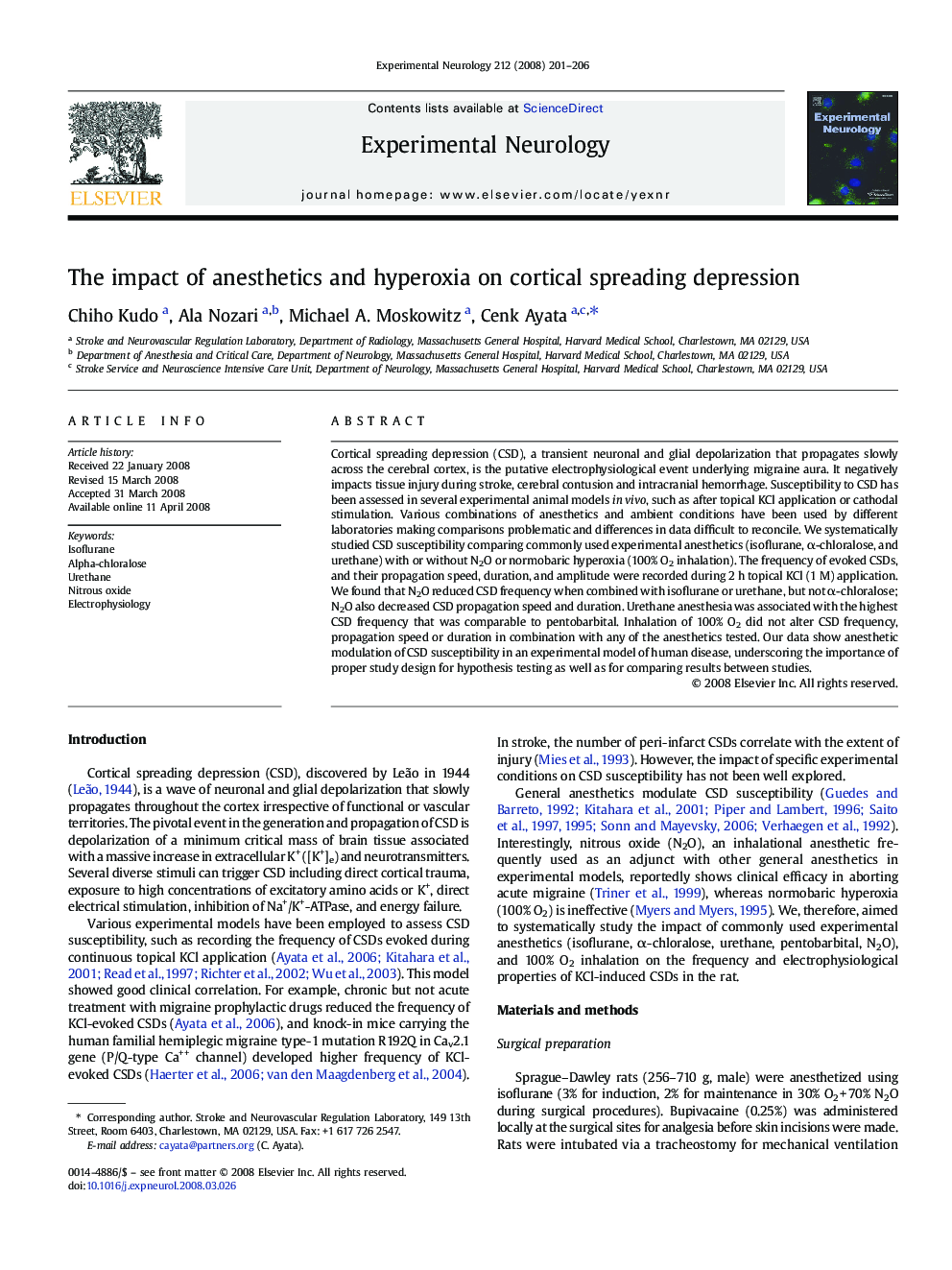| Article ID | Journal | Published Year | Pages | File Type |
|---|---|---|---|---|
| 3056610 | Experimental Neurology | 2008 | 6 Pages |
Cortical spreading depression (CSD), a transient neuronal and glial depolarization that propagates slowly across the cerebral cortex, is the putative electrophysiological event underlying migraine aura. It negatively impacts tissue injury during stroke, cerebral contusion and intracranial hemorrhage. Susceptibility to CSD has been assessed in several experimental animal models in vivo, such as after topical KCl application or cathodal stimulation. Various combinations of anesthetics and ambient conditions have been used by different laboratories making comparisons problematic and differences in data difficult to reconcile. We systematically studied CSD susceptibility comparing commonly used experimental anesthetics (isoflurane, α-chloralose, and urethane) with or without N2O or normobaric hyperoxia (100% O2 inhalation). The frequency of evoked CSDs, and their propagation speed, duration, and amplitude were recorded during 2 h topical KCl (1 M) application. We found that N2O reduced CSD frequency when combined with isoflurane or urethane, but not α-chloralose; N2O also decreased CSD propagation speed and duration. Urethane anesthesia was associated with the highest CSD frequency that was comparable to pentobarbital. Inhalation of 100% O2 did not alter CSD frequency, propagation speed or duration in combination with any of the anesthetics tested. Our data show anesthetic modulation of CSD susceptibility in an experimental model of human disease, underscoring the importance of proper study design for hypothesis testing as well as for comparing results between studies.
